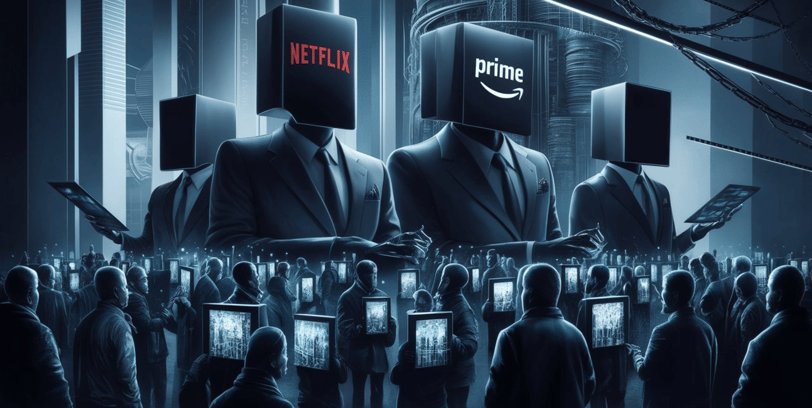The Subscription Economy Boom: How to Create a Winning Subscription Model for Any Business
The subscription economy is booming, offering businesses predictable revenue and customer loyalty. Learn how to implement a winning subscription model to drive growth and retain customers effectively.
Astitva Dubey
10/27/20244 min read


The Subscription Economy Boom: How to Create a Winning Subscription Model for Any Business
That it is a subscription model completely changed the industries that were unthinkable for them to be adopt. For example, now with Netflix streaming service and those of the shaving razor deliveries done by Dollar Shave Club, subscriptions are quite far reaching. And it seems not just a passing but becoming very rapidly the future of business. So what's behind this success in such a model and why business should look for growth within this new industry model?
Let's break this down in simple terms and use real data with practical steps.
Why People Need Subscriptions
Subscribing is convenient, plain and simple. They cut decision-making from the need of having to make the same, repetitive decisions every so often. It can get pushed right to your door and inbox. For a company, subscriptions bring recurring predictable revenue, which is extremely valued. It's a two-for-one situation for all involved: the subscriber and the issuer.
A report from Zuora claims the subscription economy increased over 435% since 2009, with an acceleration of fivefold versus companies within the S&P 500. Furthermore, this phenomenon is no longer unique to the technological companies only: According to a study conducted by Gartner, 70% of business leaders think that they are bound for growth, specifically by following the so-called subscription-based model.
Predictable Revenue
For a business owner, nothing is worse than inconsistent cash flow. One month you're doing fantastic, and the next, you're barely making it through to the weekend. Subscriptions solve this by providing predictable monthly revenue. This results in better business budgets, planning for growth, and smarter decisions.
And for customers, the draw is the same. A clear idea of what they're paying every month gives them a sense of security, which creates loyalty and makes them less likely to churn.
How Any Business Can Adopt a Subscription Model
You might be wondering, "How does this apply to my business?" Whether you're selling products, offering services, or creating content, there's almost always a way to incorporate a subscription model. Here are some examples:
Product-Based Businesses: If you sell physical goods, think about consumables—products that people use and need to replace regularly. Dollar Shave Club disrupted the razor industry because it's a very simple product on a subscription basis, delivering razors directly to customers' doors. The idea is to focus on items which people have to restock.
Service-Based Businesses: If you own a yoga studio, for example, instead of charging per class offer the members unlimited classes and various other special perks. In short, you can subscribe monthly for using their entire line of creative software - or "Creative Cloud" services like Adobe and Microsoft do on their office software programs, like Microsoft Office 365.
Content Creators: Platforms like Patreon showed the world how artists, writers, and other creators of content could earn reliable money by creating exclusive content to fans who would pay for a subscription to access this content each month.
Data-Driven Benefits
We sometimes feel that subscriptions work. We then get data to reinforce just how much they may work for business.
Customer Retention: The subscription model makes it simpler to retain customers. Harvard Business Review reveals that the subscription-based business retains customers at a rate of 5-10 times that of the traditional business. Why? Because customers are committed to the service and will remain as long as it provides added value.
Higher Customer Lifetime Value: CLTV is the revenues of a customer in her lifetime as she interacts with your business. Subscriptions boost it considerably. The CLTV of subscription-based businesses, according to McKinsey, is up to 4x that of pure-play transactional businesses. People spend more when around longer.
Better Cash Flow and Forecasting: Recurring revenue is easier to plan for because the company can anticipate future revenues much more accurately than those companies that have one-time sales. Small businesses feel more confident investing in growth without worrying about cash flow issues.
How to Build a Winning Subscription Model
Now that you know why subscriptions work, how do you build a successful model for your business? Here are a few steps:
Offer Real Value: Just slapping a subscription on any product won't work. You have to offer something people want. Think about what keeps customers engaged and loyal—whether it's convenience, exclusive access, or savings over time.
Price It Right: Price your subscription so it feels like a deal to your customers. They should feel they're getting more value than what they're paying for. If it's too expensive, they'll hesitate to renew.
Make It Easy to Cancel (Yes, Really): That's right. If they can easily cancel, then it means they'll be willing to sign up in the first place. Give them a feeling of freedom that makes them trust you. Give them the freedom to leave whenever they want and, surprisingly, they'll be staying for longer periods of time.
Deliver Consistent Value: The job starts with the first subscription, not ends there. Constantly deliver value to keep them hooked on new features, better products, or personalized services.
Conclusion: Stop Waiting
The subscription model is here to stay and transforms industries across the board. So, whether you are running a small business or launching a startup, the opportunity has now come to consider how to integrate subscriptions. The benefits—predictable revenue, better customer relationships, and easier scaling—are simply enormous.
It gives customers the convenience and consistency they always wanted while businesses get stability as well as grow beyond single sales. Go little by little, experiment, and gear up to be part of the boom called the subscription economy!
